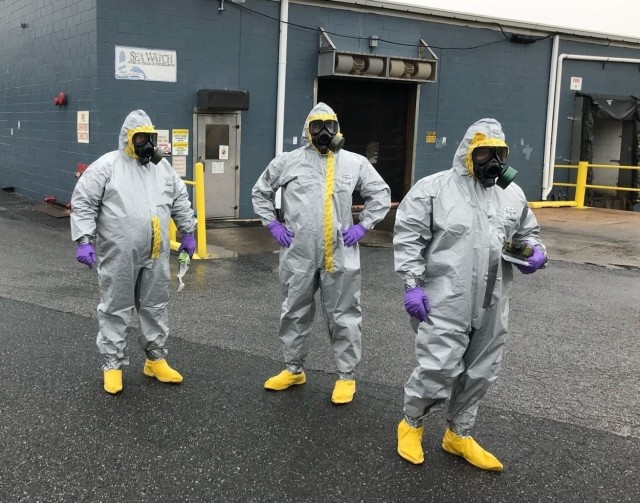20/03/2023 Stati Uniti (United States-USA), Maryland (M.D.), Harford County, Aberdeen Proving Ground
“If you ever come across anything suspicious like this item, please do not pick it up, contact your local law e enforcement agency for assistance”.
By Walter Ham
U.S. Army civilians removed a potential World War II era chemical round discovered in Delaware. The Chemical, Biological, Radiological, Nuclear, Explosives (CBRNE) Analytical and Remediation Activity (CARA) was called by U.S. Air Force Explosive Ordnance Disposal (EOD) technicians after the old round was discovered by a local clamming company. Franz J. Amann, the director of CARA, said these chemical munition recoveries are not unusual during local dredging operations. The Delaware waterways are one of many locations along the East Coast that the War Department disposed of chemical warfare materiel after 1944,” said Amann. “Initially, disposals occurred at a minimum depth of 300 feet and ten miles offshore. In 1945, the War Department changed the minimum depth of disposal to 6,000 feet. After almost 80 years, many of these rounds have been moved away from their burial sites by the ocean currents and during hurricanes.” Michael J. Rowan and Kerry M. Jones from CARA worked with Air Force EOD technicians from the 436th Civil Engineer Squadron EOD Flight on Dover Air Force Base, Delaware, and a local hazardous material unit to safely secure and remove the unexploded ordnance (UXO) round. Rowan, an Ordnance Removal Manager at CARA, said the old UXO round was suspected to be a MK II 75mm shell. CARA relied on already onsite emergency responders for medical, law enforcement and decontamination support and seamlessly integrated into the existing onsite Incident Command Post. After an hour and 15 minutes onsite, Rowan said his team had safely packaged, labeled and moved the round from the incident site to secure storage. After a short transport to Dover Air Force Base, CARA was able to immediately conduct a more deliberate assessment of the round. Rowan said the response was one of the fastest in more than two decades of responding to dozens of old munitions discovered offshore. Several personnel noted that this was the most timely and efficient response performed there to date,” said Rowan.
If you find anything that appears to be an explosive device, do not touch it, leave it where it is and call the police. We will contact the appropriate agencies to properly dispose of the item.
Dear editors, Biography of a bomb is aimed at highlighting the danger caused by unexploded bombs. Moreover, the most important aspect is that we work completely non profit, raising awerness about this topic is what drives us. We apologize if we make use of pictures in yours articles, but we need them to put a context in how findings are done. We will (and we always do) cite source and author of the picture. We thank you for your comprehension





